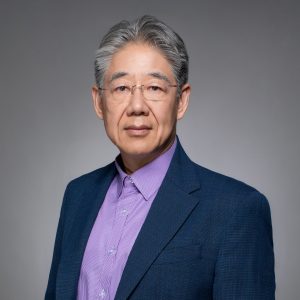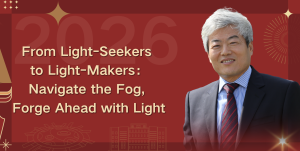17 Dec 2024
Professor Jintai Ding was recently appointed Dean of the School of Mathematics and Physics at Xi'an Jiaotong-Liverpool University. Professor Ding is an internationally recognised expert in the field of Post-Quantum Cryptography (PQC), with his work featured in top cryptography venues such CRYPTO, and Eurocrypt. Professor Ding is one of the designers of the only quantum-resistant key establishment standard by the US National Institute of Standards and Technology (NIST), ML-KEM (FIPS 203), formerly called Kyber. He is the inventor and patent owner of the first post-quantum key exchange, one of the two patents licensed to NIST for ML-KEM.

After earning his PhD in Mathematics from Yale University in 1995, Professor Ding worked at the Research Institute for Mathematical Sciences at Kyoto University in Japan. He later returned to the US to teach at the University of Cincinnati, where he is now designated as a Distinguished Charles Taft Professor Emeritus. In 2020, he joined Tsinghua University in China as a full professor, teaching courses in cryptography while leading Ding Lab in privacy protection at Beijing Institute of Mathematical Sciences and Applications.
Post-quantum cryptography (PQC) is a technology designed to safeguard communication security against potential attacks from large-scale quantum computers. Such attacks could compromise currently widely used public-key cryptosystems that protect the internet and other digital communications.
From theoretical mathematics to applied mathematics and then to PQC, Professor Ding's guiding principle in selecting research directions has been his interest. During his undergraduate studies in computational mathematics at Xi'an Jiaotong University, he sought to explore more challenging and profound fields. He then entered the University of Science and Technology of China to study number theory under Professor Hongwen Lu, a student of Professor Luogeng Hua. Within just two months, he proved a conjecture proposed by German mathematician Carl Ludwig Siegel, for which he received the Zhong Jiqing Mathematics Award from the Chinese Mathematical Society.
"The knowledge I have accumulated is almost omnipresent in the application of cryptography. I studied computational mathematics, which is very important in cryptography. I have also studied number theory for many years, and later, some concepts from quantum groups and the algebraic representation theory that I studied at Yale have also been applied," Professor Ding says.

Since 2000, Professor Ding has been engaged in research on PQC, becoming one of the global pioneers in the field.
"The process of breaking cryptosystems is full of uncertainty, but there are only two possible outcomes: success or failure. The decryption process, starting from the result, is very appealing to me."
In 2011, he invented the Ding key exchange, which had a profound impact on the post-quantum key exchange algorithm NewHope used by Google Chrome.
"We have entered a brand-new digital era. For any country or organization that wants to ensure information security, it is necessary to prepare for the threat of quantum computers now," he says.
Professor Ding is one of the designers of the only quantum-resistant key establishment standard by the US National Institute of Standards and Technology (NIST), ML-KEM (FIPS 203), formerly called Kyber. He is the inventor and patent owner of the first post quantum key exchange, one of the two patents licensed to NIST for ML-KEM.
As post-quantum cryptography is a rapidly developing new field, Professor Ding will establish a research team and laboratory at XJTLU to continue his research.
He emphasizes the importance of mathematics and physics as basic disciplines and advocates for closely integrating mathematics education with practical industrial applications to cultivate students' abilities to solve real-world problems.
Professor Ding: "Mathematics education should not be limited to the derivation of theories and formulas but should also focus more on practice and application. I hope our courses can enable students to truly understand and grasp the essence of mathematics in the process of solving practical problems."
By Qinru Liu
Edited by Tamara Kaup
17 Dec 2024







